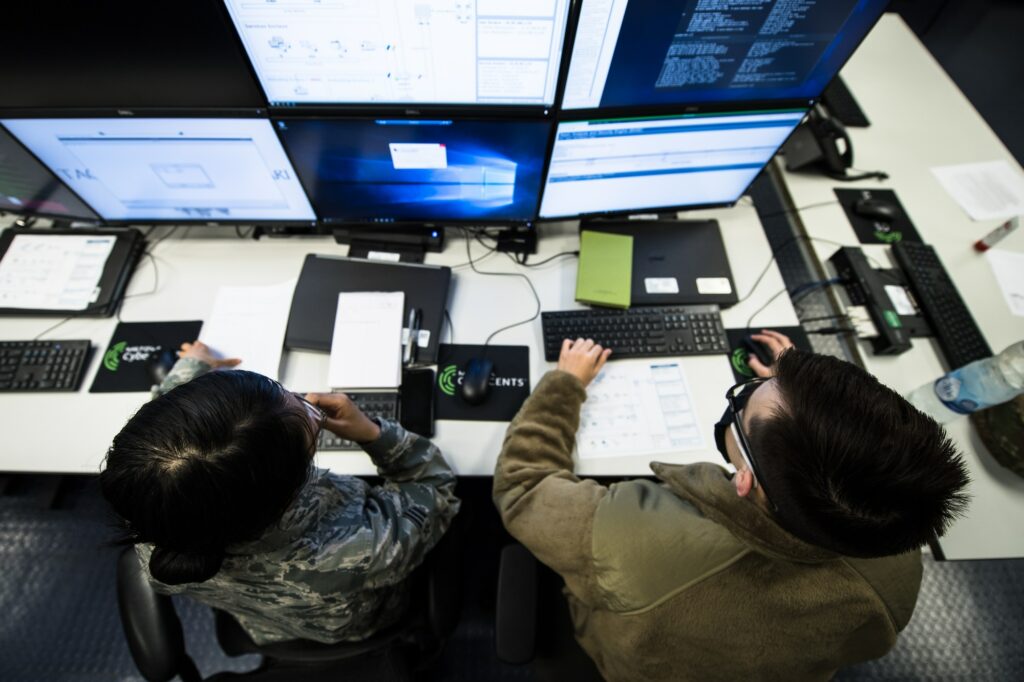The rapid evolution of cloud computing has significantly impacted various sectors, including defense. Defence Cloud, a term encompassing cloud solutions specifically tailored for defense and military applications, stands at the forefront of this transformation. The increasing need for secure, scalable, and efficient data management solutions has driven defense organizations worldwide to adopt cloud technologies. This article provides an overview of the current global status of Defence Cloud developments, highlighting key trends, major players, and strategic initiatives.
One of the most significant trends in Defence Cloud developments is the enhancement of security measures. Zero Trust Architecture, which assumes that threats could be internal or external and mandates strict identity verification for every person and device accessing resources on the network, has become a cornerstone of modern Defence Cloud strategies. Advanced encryption techniques are crucial, with data encryption both at rest and in transit being standard practice. Additionally, quantum-resistant encryption methods are being explored to future-proof security. The integration of AI and machine learning further enhances security by enabling real-time threat detection and response systems.
Interoperability and collaboration are also pivotal in the evolution of Defence Cloud. Standardized cloud frameworks are being developed to ensure seamless data sharing and collaboration among NATO allies and other strategic partners. In the United States, the Joint All-Domain Command and Control (JADC2) initiative aims to create an interconnected network across all military branches, leveraging cloud technologies for real-time data integration and decision-making.
Hybrid and multi-cloud strategies have gained prominence in the defense sector. Hybrid cloud solutions, which combine on-premises infrastructure with public and private cloud services, offer flexibility and control over sensitive data. Utilizing services from multiple cloud providers helps avoid vendor lock-in and increases resilience, making multi-cloud approaches an attractive option.
Edge computing is another crucial aspect of Defence Cloud developments. Tactical edge solutions bring computational power closer to the battlefield, reducing latency and enabling real-time data processing and analytics, which are essential for mission success.
Several major players dominate the Defence Cloud market. Amazon Web Services (AWS) offers AWS GovCloud, aimed at U.S. government agencies, including defense, with isolated cloud regions that provide stringent security controls and compliance measures. AWS also offers cloud solutions capable of handling classified information up to the Secret level. Microsoft Azure, through Azure Government, provides cloud services tailored for U.S. government needs, ensuring compliance with rigorous government standards. Additionally, Azure Space collaborates with defense organizations to deliver satellite-based cloud capabilities for global connectivity and data processing.
Google Cloud offers secure cloud infrastructure with advanced data analytics and machine learning capabilities through Google Cloud for Government. Anthos for Government, a hybrid and multi-cloud application platform, aids defense agencies in managing and securing applications across diverse environments. IBM Cloud leverages its expertise in AI and quantum computing to provide robust solutions for defense data analytics and security through IBM Cloud for Defense. The Kubernetes-based container platform, Red Hat OpenShift, supports hybrid cloud deployments, which are essential for defense operations requiring flexibility and control.
Strategic initiatives and global collaborations are driving the adoption of Defence Cloud solutions. In the United States, the Department of Defense (DoD) has embarked on initiatives such as the Joint Enterprise Defense Infrastructure (JEDI), which, despite facing legal challenges and being eventually canceled, underscored the DoD’s commitment to integrating cloud solutions. The subsequent Joint Warfighting Cloud Capability (JWCC) aims to deliver multi-vendor cloud services to support defense operations.
The European Defence Agency (EDA) is working on creating a secure, scalable cloud platform to support the EU’s defense operations and ensure interoperability among member states through the European Defence Cloud. In the Asia-Pacific region, countries like Japan, South Korea, and Australia are investing in cloud technologies to modernize their defense infrastructure. These initiatives include partnerships with major cloud providers and the development of national defense clouds to enhance operational capabilities and cybersecurity.
Despite the accelerated adoption of Defence Cloud solutions, several challenges remain. Ensuring data sovereignty, where sensitive data remains within national borders and complies with local regulations, is a significant concern. Integrating cloud solutions with legacy systems and across different military branches can be complex and resource-intensive. Additionally, the continuously evolving cyber threat landscape requires defense cloud solutions to be adaptive and resilient.
Looking ahead, the future of Defence Cloud developments will likely see increased use of AI and machine learning, greater emphasis on edge computing, and more robust international collaborations to address shared security challenges. As technology advances, Defence Cloud will play a pivotal role in enhancing the strategic and operational capabilities of defense organizations worldwide.
In conclusion, Defence Cloud represents a transformative shift in how defense organizations manage and utilize data. By adopting advanced cloud solutions, these organizations can achieve greater efficiency, security, and interoperability, ensuring they are better equipped to face modern challenges and threats.






